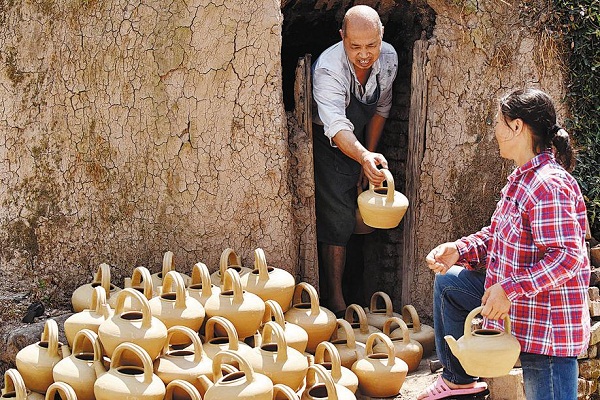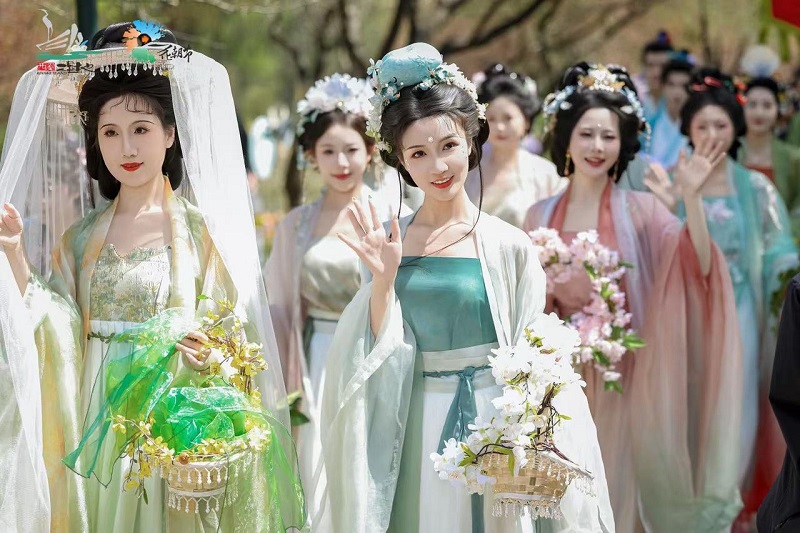Porcelain sheds light on nation's history and culture
Teapots are placed in a kiln in Wuyi county, Jinhua. [Photo by ZHANG JIANCHENG/FOR CHINA DAILY]
Palace discoveries
For centuries, people could only imagine the beauty of mise celadon, as they had to rely on limited information about it, such as a line of poetry comparing such items to "the moon dyed with spring water". The technique was then lost for more than 1,000 years and no such objects remained. Many people even began to doubt the existence of this mysterious type of porcelain.
However, in 1987, a total of 13 pieces of mise celadon were found in an underground palace at the Famen Temple in Baoji, Shaanxi province. Wrapped in silk, they were discovered in a lacquered wooden box hidden in the temple's treasure chamber. A stone tablet unearthed with the celadon-a record of items that Tang emperors offered to Buddha-bore the Chinese characters for "mise ware", revealing the items' identity.
Cai said important sources such as ancient works of poetry, calligraphy, painting and classical books help us understand the past, but the most realistic and convincing evidence lies arguably in cultural relics buried deep underground, especially porcelain from the great kilns, "which may have been broken but still looks like new."
After 160,000 porcelain relics, many of them intact, were recovered from the Nanhai One, a cargo ship believed to have sunk off the coast of southern China during the Southern Song Dynasty, experts thought they had found a "time capsule".
Cai said: "People often speak of the glory, the splendor, the cultural diversity and the booming trade and commerce of this dynasty. But how can you travel back 800 years and truly feel it? Now, with all the excavated porcelain, including items from the Nanhai One, a picture of time can be effectively pieced together for people to appreciate."
Jiang Yu, director of the Department of Ceramics at the Zhejiang Provincial Museum, said: "Our ancestors mastered the craft of producing porcelain, which has since been highly regarded, not only by the Chinese, but by people all over the world. It has become an indispensable part of culture, as well as part of people's everyday life."
This, perhaps, is where the true significance of porcelain lies.
-
Xixi Wetland invites visitors to Huazhao Festival
March 25, 2025
-
Hangzhou sets standard for concert hosting
March 19, 2025
-
What is making Hangzhou the new tech powerhouse of China?
March 10, 2025
-
Inside Hangzhou: China's high-tech dream factory
March 12, 2025




